Want to become a better darts player? Then you need a structured approach to **darts training exercises**. This article provides practical drills and techniques to improve your accuracy, consistency, and mental game. You’ll learn how to practice effectively and maximize your improvement.
⚠️ Still Using Pen & Paper (or a Chalkboard)?! ⚠️
Step into the future! The Dart Counter App handles all the scoring, suggests checkouts, and tracks your stats automatically. It's easier than you think!
Try the Smart Dart Counter App FREE!Ready for an upgrade? Click above!
Why Darts Training Exercises Are Crucial
Many players simply throw darts without a specific plan, hoping to improve. While casual play is fun, it’s not the most efficient way to hone your skills. Structured practice, incorporating specific **darts training exercises**, is essential for developing consistent accuracy and breaking through plateaus. It allows you to identify weaknesses, focus on specific areas for improvement, and track your progress over time.
Think of it like any other sport or skill – professional athletes don’t just show up on game day and perform at their peak. They dedicate countless hours to drills and exercises designed to enhance their performance. The same principle applies to darts. Consistently practicing darts allows you to hone in on the skill set.
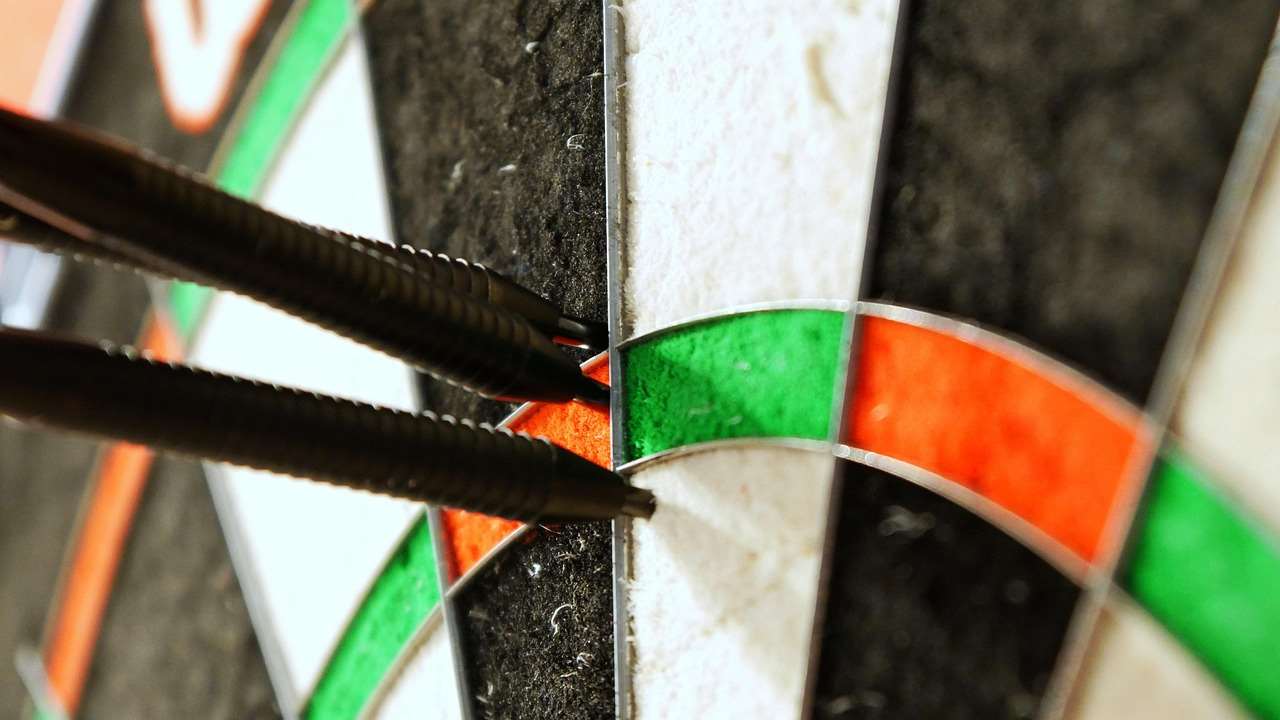
Essential Darts Training Exercises to Improve Accuracy
These exercises focus on improving your muscle memory, consistency, and targeting skills. Remember to maintain a proper stance and grip throughout these drills.
The Around-the-Clock Drill
This classic drill helps improve your accuracy on all parts of the dartboard. The goal is simple: hit each number (1-20) in sequence. Start with the 1, then the 2, and so on. You can increase the difficulty by requiring yourself to hit each number with a single dart. If you miss, you must start over at that number. This exercise is great for building consistency and addressing any weaknesses in your targeting.
Doubles and Trebles Practice
Doubles and trebles are crucial for finishing legs and scoring big. Dedicate time specifically to targeting these segments. Try the “Doubles Around the Clock” drill, where you aim for each double in sequence. Alternatively, focus on specific doubles that you struggle with. For trebles, the same approach applies – concentrate on hitting the treble 20, treble 19, and other key scoring areas. Practicing doubles is a great way to emulate a darts match.
The 20-Tops-Bull Drill
This drill combines three of the most important targets in darts: the 20, the double 20 (tops), and the bullseye. Set a target score (e.g., 100 points). Throw three darts, aiming to score by hitting the 20, tops, or bull. Calculate your score and try to reach the target score in as few rounds as possible. This exercise improves your scoring ability and your ability to switch between different targets quickly.
Developing a Consistent Throw: Technique and Drills
Consistency is key to success in darts. A repeatable throwing motion is essential for accurate targeting. Here are some exercises to help you develop and maintain a consistent throw.
Mirror Practice
Practice your throwing motion in front of a mirror. Focus on your stance, grip, arm movement, and release point. Pay attention to any inconsistencies or flaws in your technique. This allows you to visually identify areas for improvement and make adjustments accordingly. Practicing using the mirror image can be especially helpful.
The One-Dart Drill
This drill involves throwing a single dart repeatedly at the same target (e.g., the bullseye). The focus is on replicating your throwing motion perfectly each time. Pay close attention to your grip, stance, and release. This helps build muscle memory and reinforces a consistent throwing action. After each dart thrown, take a moment to assess where you went wrong and actively correct it.
Video Analysis
Record yourself throwing darts and analyze the footage. This provides a more objective view of your technique than mirror practice. Look for any inconsistencies or areas for improvement. You can also compare your technique to that of professional players to identify areas where you can learn and adapt. Video analysis ensures you’re practicing good technique.
Mental Toughness: Darts Training Exercises for Focus and Concentration
Darts is a mental game as much as it is a physical one. The ability to maintain focus, manage pressure, and bounce back from setbacks is crucial for success. These exercises will help you develop your mental toughness.
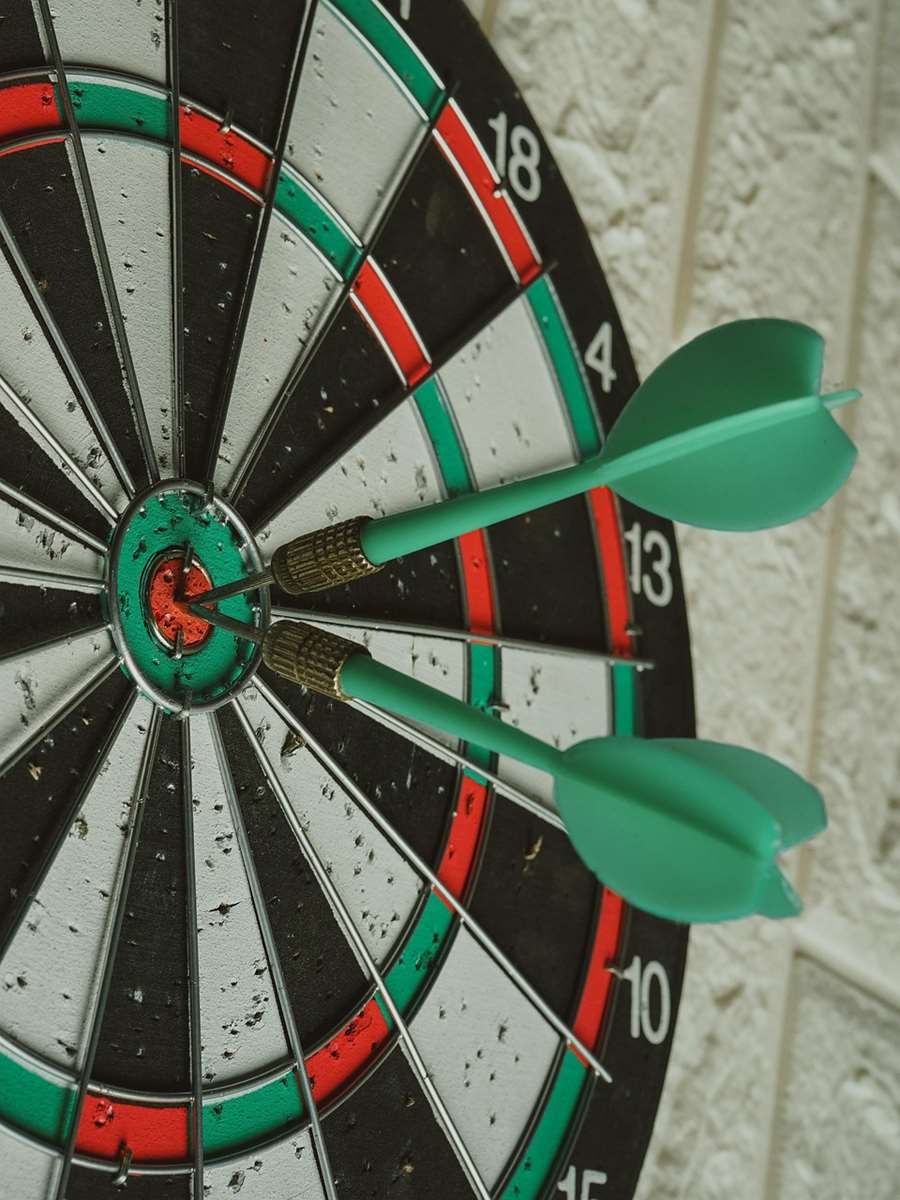
Visualization
Before you start practicing, take a few minutes to visualize yourself throwing darts accurately. Imagine the feeling of the dart leaving your hand, the trajectory of the dart, and the sound of it hitting the target. This helps prime your mind for success and improves your confidence. Visualization techniques can have a real impact on your game.
Pressure Practice
Simulate the pressure of a real match by setting up challenging scenarios. For example, try finishing a leg with a specific checkout while pretending you are in a high-stakes game. Alternatively, throw darts while listening to distracting noises or having someone watch you closely. This helps you learn to maintain focus and perform under pressure. Pressure is a major factor when trying to hit a perfect darts game.
Mindfulness and Breathing Exercises
Learn to control your breathing and calm your mind through mindfulness and breathing exercises. Deep, slow breaths can help reduce anxiety and improve focus. Practice these techniques before and during your practice sessions to help you stay relaxed and in the zone. Consistent breathing is key to consistency.
Advanced Darts Training Exercises for Experienced Players
Once you’ve mastered the basics, you can move on to more advanced **darts training exercises** to further refine your skills.
The Shanghai Game
This game involves throwing three darts at each number in sequence (1-20), aiming to hit the single, double, and treble of that number in the same turn. A “Shanghai” occurs when you hit all three in one turn, winning the game instantly. This exercise improves your accuracy on all segments of the dartboard and forces you to think strategically. Consider the dart steel, as that can impact overall gameplay.
High-Checkout Challenges
Practice specific high checkouts, such as 161, 170, and 151. These require precise targeting and strategic thinking. Research common checkout combinations and dedicate time to mastering them. This will give you a significant advantage in matches. If you prefer automatic scoring, consider using an Automatic dart scoring app (https://dartcounterapp.com/).
Opposite Hand Practice
While not a primary focus, occasionally practice throwing with your non-dominant hand. This helps improve your overall coordination and control. It can also be beneficial if you experience an injury to your dominant arm. It will also help you understand the mechanics of your throwing motion even better.
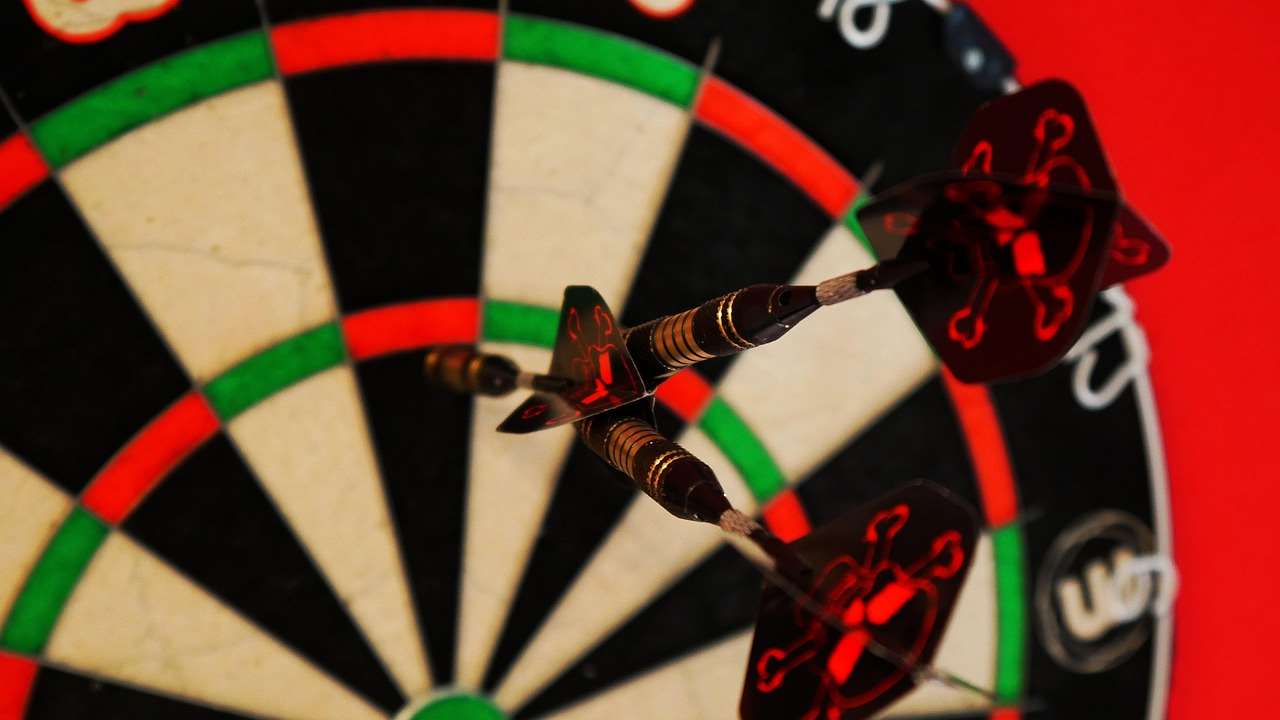
Building a Darts Training Exercises Plan
Creating a structured training plan is essential for maximizing your improvement. Here’s how to build a plan that suits your needs.
Set Realistic Goals
Start by setting realistic goals for yourself. What do you want to achieve with your training? Do you want to improve your average score, master specific checkouts, or win more matches? Break down your goals into smaller, more manageable steps. This will help you stay motivated and track your progress.
Schedule Regular Practice Sessions
Consistency is key. Schedule regular practice sessions and stick to them as much as possible. Even short, focused practice sessions are more effective than infrequent, longer sessions. Aim for at least 30 minutes of practice several times a week. The correct darts game height is crucial for practice.
Track Your Progress
Keep track of your scores, your accuracy on different targets, and your overall performance. This will help you identify areas where you are improving and areas where you still need work. You can use a notebook, a spreadsheet, or a dedicated darts tracking app to monitor your progress.
Choosing the Right Equipment for Effective Darts Training Exercises
Your equipment can significantly impact your performance. Invest in quality darts and a good dartboard.
Darts
Experiment with different weights, shapes, and materials to find darts that feel comfortable and suit your throwing style. Consider trying different flights and stems to fine-tune your dart’s trajectory. Proper dart selection can help improve scores like the Nathan Aspinall Darts.
Dartboard
Choose a high-quality dartboard made from sisal fibers. These boards are more durable and provide better dart retention than cheaper alternatives. Make sure the board is properly mounted at the correct height and distance. This will ensure that you are practicing under realistic conditions.
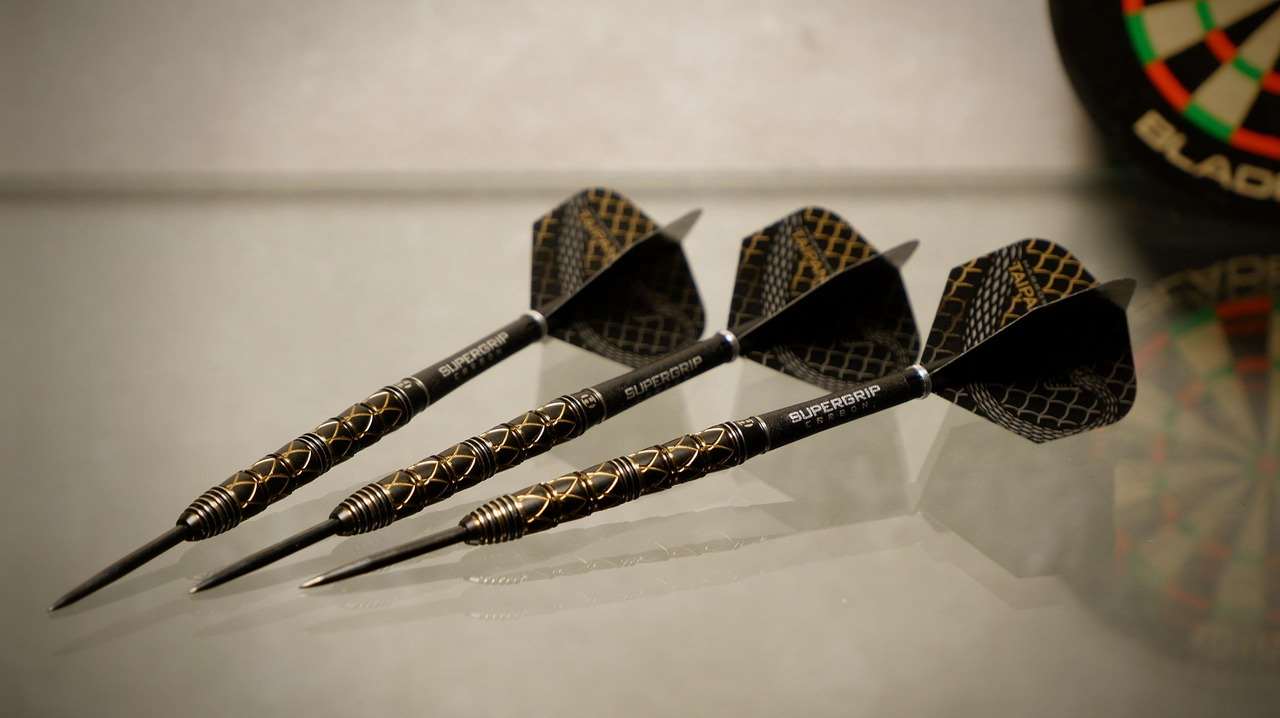
Warm-up and Cool-down for Darts Training Exercises
Just like any other sport, it’s important to warm up before your practice sessions and cool down afterwards.
Warm-up
Start with some light stretching to loosen up your muscles. Then, throw a few darts at random targets to get your arm moving and your eye in. Gradually increase the intensity of your throws until you are throwing at full speed. A simple warm-up of 5-10 minutes is sufficient. Be sure to check when will darts finish on your favourite match days!
Cool-down
After your practice session, take a few minutes to cool down. Throw a few more darts at random targets, gradually slowing down your throwing motion. This will help your muscles recover and prevent soreness. Light stretching after the session can also be beneficial. Cooling down helps improve consistency.
Troubleshooting Common Problems During Darts Training Exercises
Even with a well-structured training plan, you may encounter problems. Here are some common issues and how to address them.
Inconsistent Throwing
If you are struggling with consistency, go back to basics. Focus on your stance, grip, and throwing motion. Use mirror practice or video analysis to identify any flaws in your technique. Slow down your throw and focus on replicating the same motion each time. Also, assess the impact of your dart board.
Target Panic
Target panic is a common problem that can cause you to lose focus and make erratic throws. To overcome target panic, practice mindfulness and breathing exercises. Focus on the process of throwing rather than the outcome. Try visualizing yourself hitting the target before you throw.
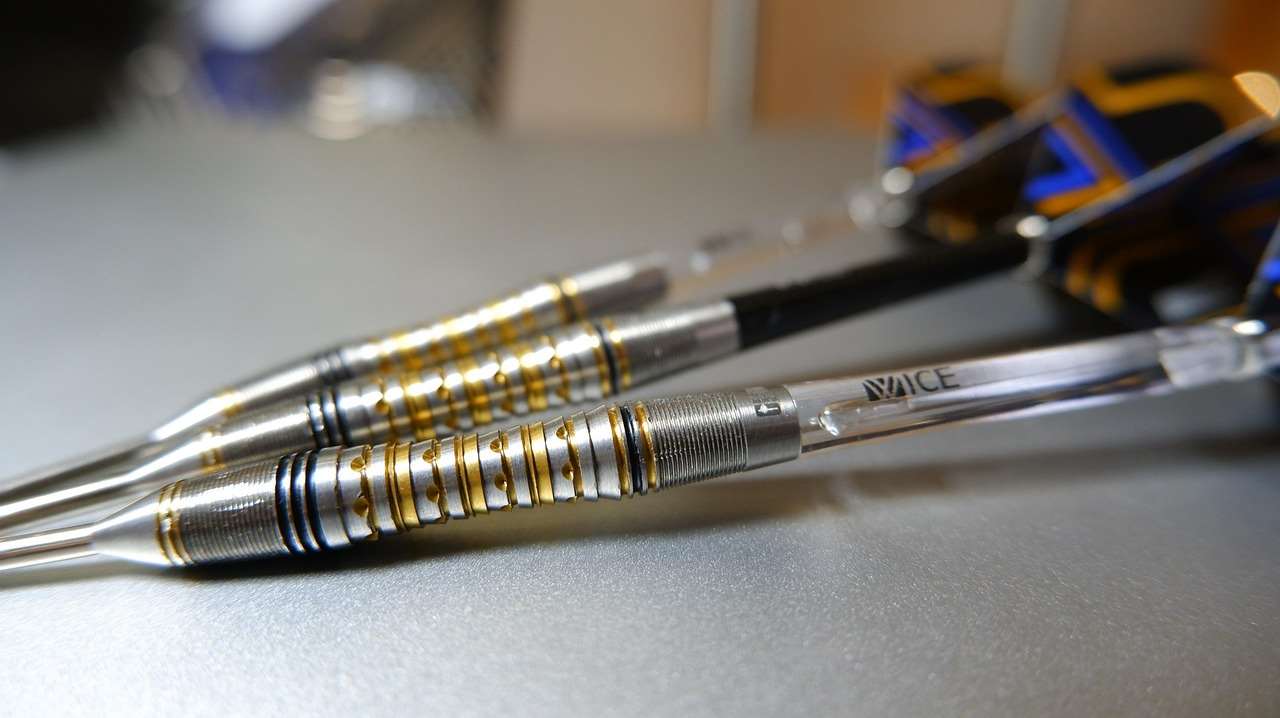
Plateaus
If you reach a plateau in your progress, don’t get discouraged. This is a normal part of the learning process. Try changing up your training routine to challenge yourself in new ways. Focus on different areas of your game, such as your mental toughness or your checkout skills. Consider seeking advice from a more experienced player or a darts coach.
Conclusion
Implementing these **darts training exercises** can significantly improve your game. Remember, consistency, focus, and a structured approach are key to success. By dedicating time to these exercises and tracking your progress, you’ll be well on your way to becoming a more accurate and consistent darts player. Start incorporating these tips into your practice routine today and watch your skills soar! Now that you’re prepared, find a darts flight and enjoy!
Hi, I’m Dieter, and I created Dartcounter (Dartcounterapp.com). My motivation wasn’t being a darts expert – quite the opposite! When I first started playing, I loved the game but found keeping accurate scores and tracking stats difficult and distracting.
I figured I couldn’t be the only one struggling with this. So, I decided to build a solution: an easy-to-use application that everyone, no matter their experience level, could use to manage scoring effortlessly.
My goal for Dartcounter was simple: let the app handle the numbers – the scoring, the averages, the stats, even checkout suggestions – so players could focus purely on their throw and enjoying the game. It began as a way to solve my own beginner’s problem, and I’m thrilled it has grown into a helpful tool for the wider darts community.